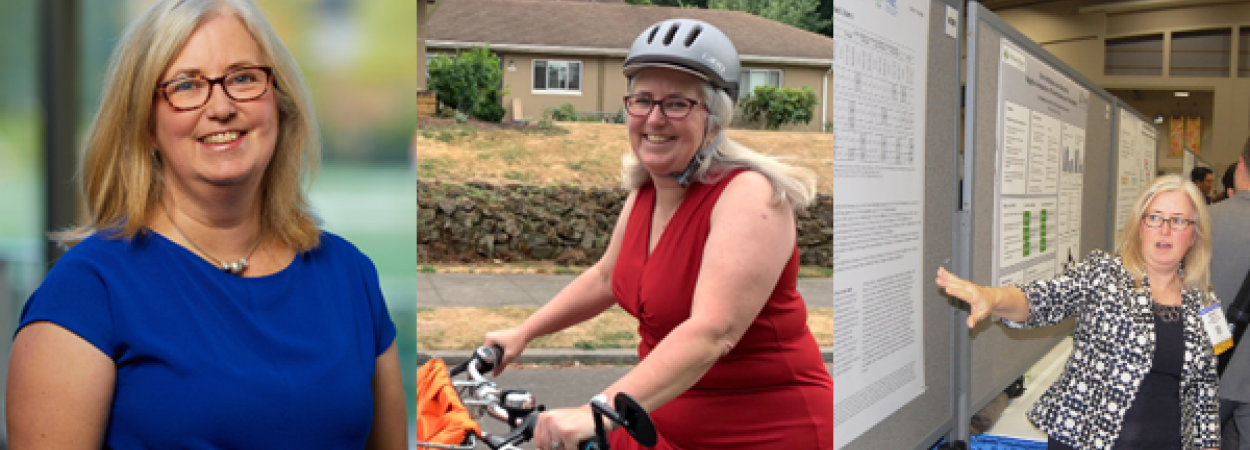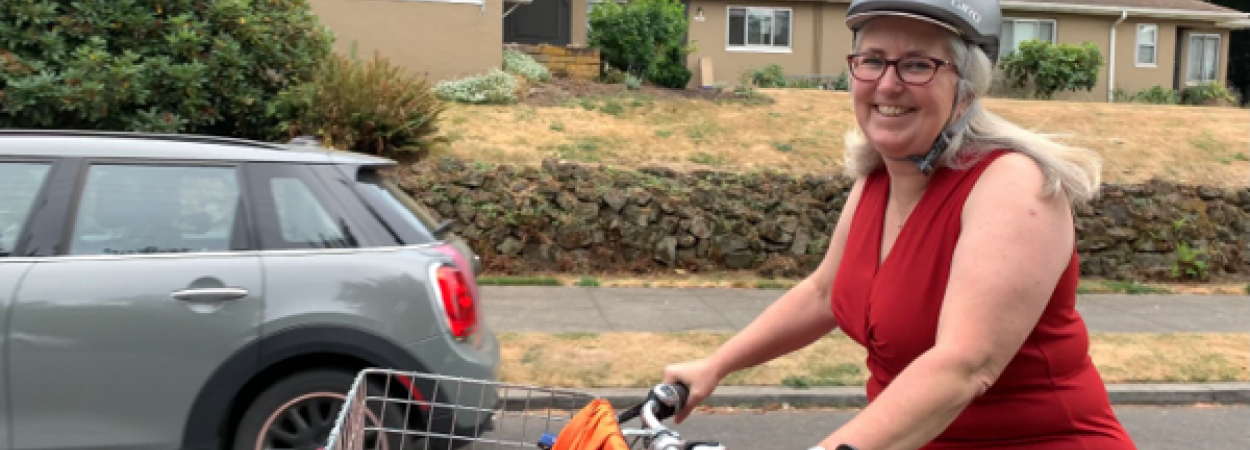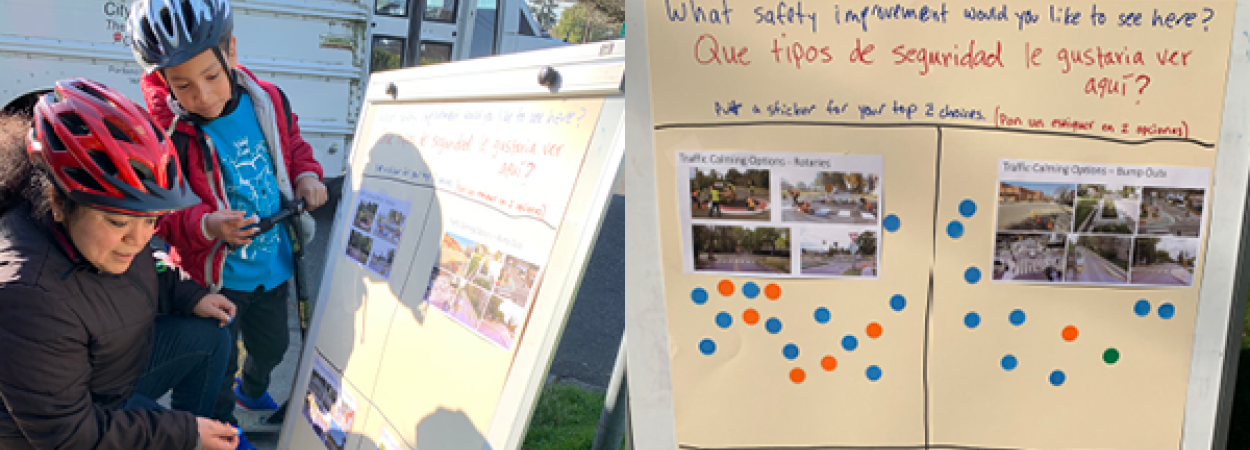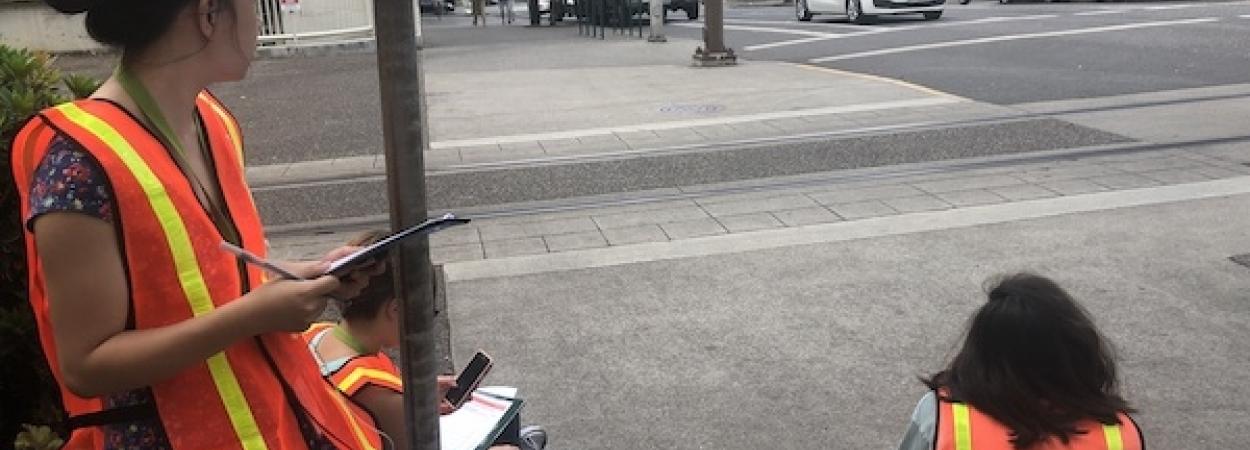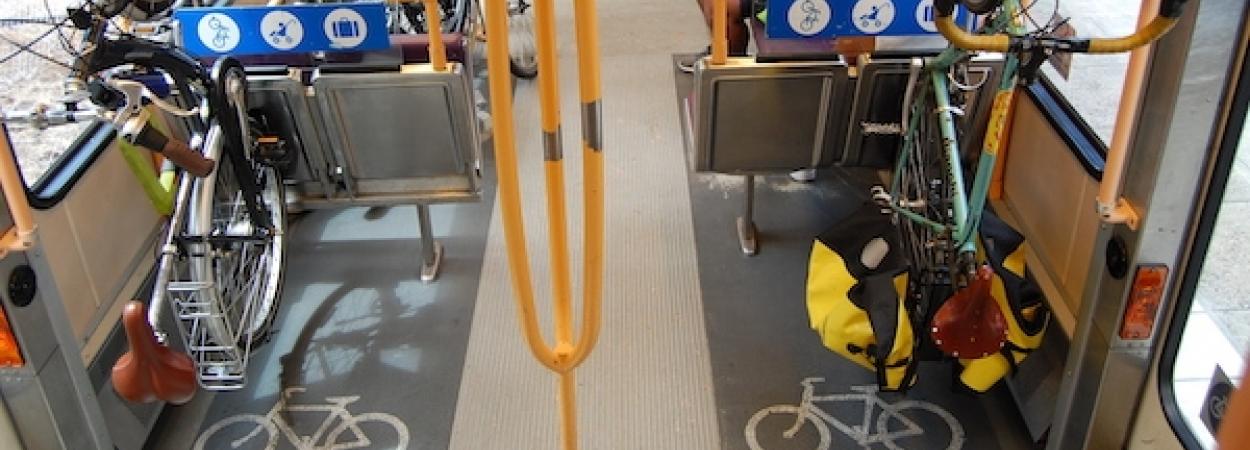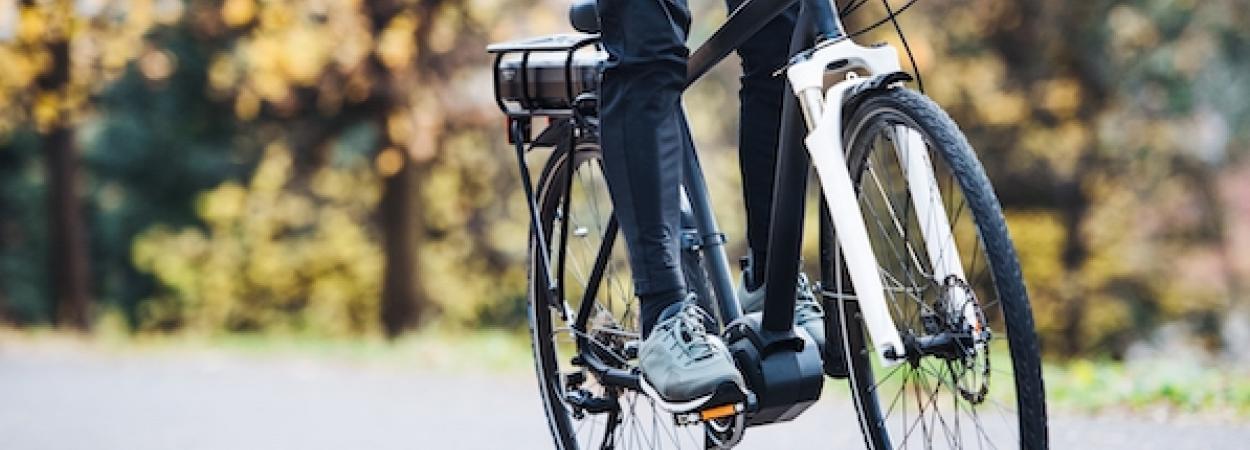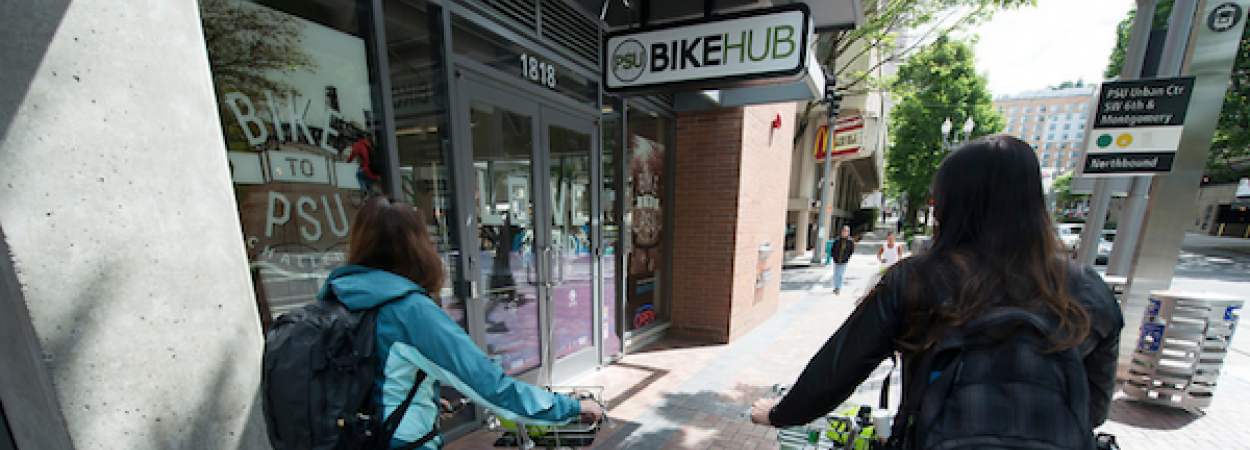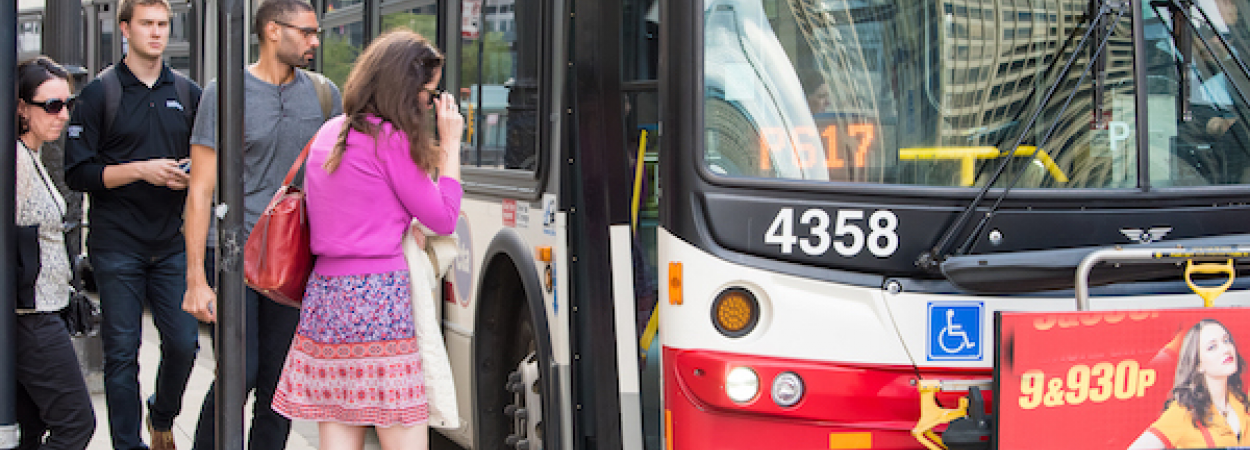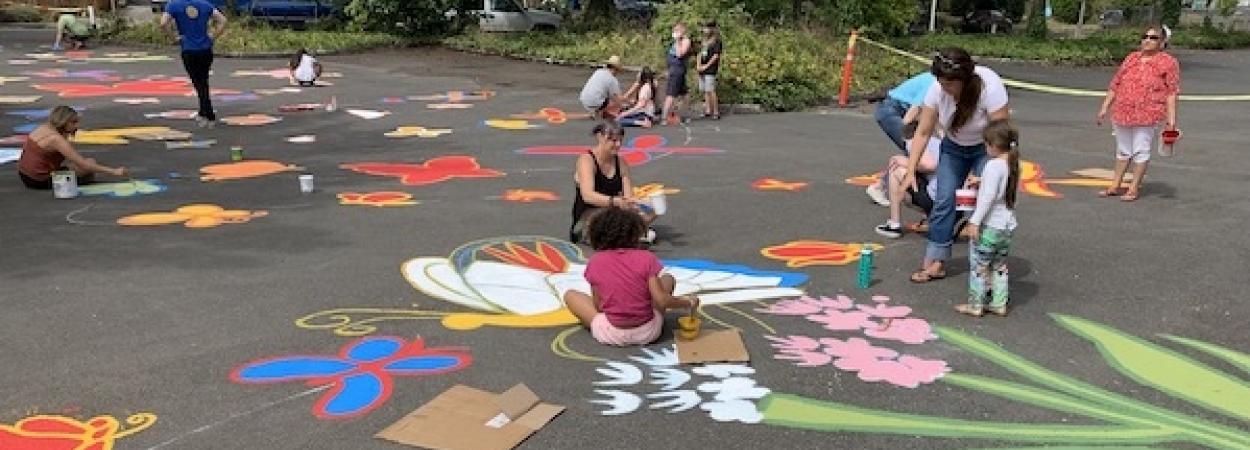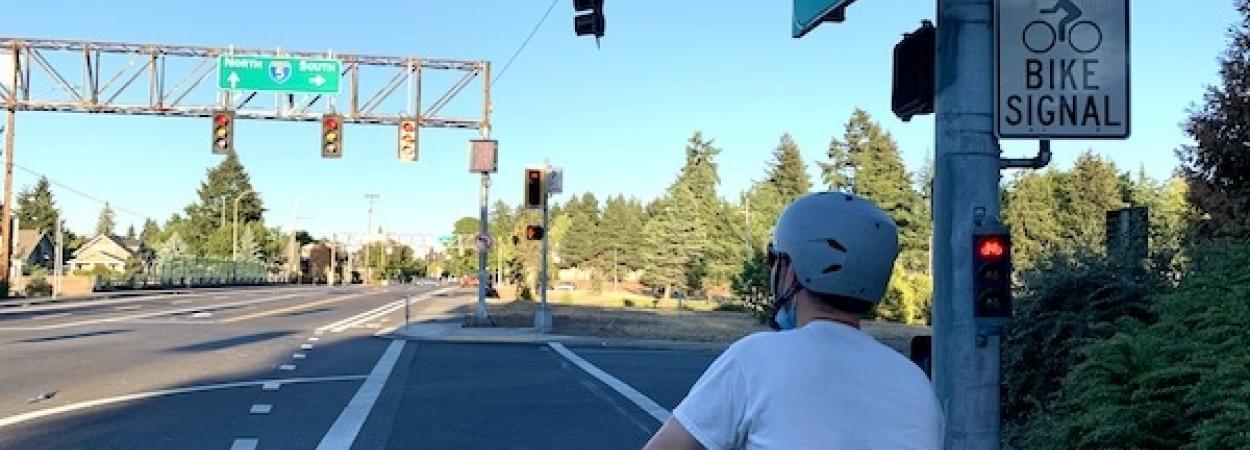Last month, Portland State University announced the 2021 awards for faculty and staff excellence for research, graduate mentoring and research administration. The awards are among the university's highest honors. The 2021 Presidential Career Research Award recipient is Jennifer Dill. Dill is a professor in the Nohad A. Toulan School of Urban Studies and Planning, Director of the Transportation Research & Education Center at PSU, and Director of the National Institute for Transportation and Communities, a national university transportation center funded by the U.S. Department of Transportation.
TREC Communications Director Cait McCusker interviewed Dr. Dill last week to learn more about the origin and trajectory of her career in transportation research at PSU.
What led you to choose transportation research as your career?
Growing up in the 1970’s, I was surrounded by environmental issues. It was the time of the Clean Air Act, Clean Water Act, the EPA, Earth Day, pollution, the oil crisis...all of that shaping my view on the world. When I went to undergraduate at UC Davis I knew I wanted to do something related to environmental policy and cities. Cities held a certain fascination for me, and in college I started putting all the pieces together and recognizing the huge impact that transportation has on urban areas and the environment. Transportation appealed to both the quantitative, analytical side of me, and also the people-oriented side of me that wanted to see the tangible impacts first hand.
I got a master's degree in planning at UCLA and I started working for the US Environmental Protection Agency doing air quality work with a focus on transportation. That's what I did until I decided to get a PhD and dig in deeper. The field of transportation just offered me so many good job opportunities.
Do you have a particular teacher or mentor that made an impact on you?
There’s definitely two people in my life that stand out: Dan Sperling and Marty Wachs.
Dan Sperling was my professor as an undergrad student at UC Davis, and he hired me to do research alongside him. We wrote my first TRB paper together! As an undergraduate, that was a big deal. He even invited me to the grad seminars where I got the opportunity to connect with PhD students. The confidence that he had in me was very supportive.
At UCLA Marty Wachs was my advisor as a graduate student, and again at UC Berkeley when I pursued my PhD. I’ve been thinking about Marty a lot lately. He passed away just a few weeks ago [read a memoriam for Marty Wachs from U.C. Berkeley]. He gave me so many opportunities, and in addition to being a leading scholar who did interesting work - he was a role model for how I serve as a professor today. He was a very caring person who spent a lot of time with his students. He had so many of them, but he managed to make each of his students feel special. He was an engineer, but also such a people person. He placed a big importance on ethics and serving underrepresented people in his transportation work.
There have certainly been others instrumental to my growth, particularly later on in my career I’ve developed peer networks of women that I lean on for insight and connection.
How has your 20 year tenure at Portland State University influenced you or your work?
Teaching at an institution that values engaged learning and research is important to me. Portland State’s motto, “Let knowledge serve the city”, is the sentiment that motivated me to get a PhD in the first place. It’s allowed me to do the type of applied research that’s going to have a direct impact on practice and policies in cities. It’s not purely academic or just about citations. Portland more broadly has a lot of public institutions that are willing to engage with the university, which is so great.
Do you have any memories at PSU that you are particularly fond of?
I’ve been pretty happy here at PSU. When I think of some of the most fun I’ve had, it’s been in one-on-one conversations with students. Working together on a research project, in advising sessions, and just seeing where they go after graduation. I’m lucky to have had so many of my past students stay in the Portland area.
A funny, but not fond, memory I have was September 2001 – my first week as a PSU faculty member at CUPA [College of Urban and Public Affairs]. I was running to catch a bus, and there was this lip of the curb where the street car tracks descended and I just landed funny. I had broken my foot and spent the rest of my first term teaching in a boot. I was the new transportation professor at PSU and here I am, brand new to my role, with a broken foot from public transportation. I’m glad I can laugh about it now.
One memory that really stands out to me is getting the news in December 2016 that we won the UTC competition for the FAST Act and continuing on with our NITC program. And for that matter, also the memory of getting the news that we won the UTC competition for MAP-21 in 2013. The shared excitement with my team, and just having that recognition of our expertise was really wonderful.
What has Directing TREC and the NITC program meant to you?
Having an impact on practice and the partnerships we’ve built from TREC, the Transportation Research and Education Center here at PSU, along with our collaborative research program, NITC. One of the biggest challenges of collaboration is finding the people that you just honestly enjoy working with, that are also smart and do great work. NITC is not just a contractual grant where we divy up money. It’s a real collaboration and we work so well together.
We've been able to build on this partnership and our body of work on multimodal transportation. We focus on work that matters, and not just counting the number of citations or journal articles.
What research contribution have you made to the transportation profession that is most meaningful to you?
What stands out to me the most is bikeway research I’ve done around bike boxes, green lanes, and bike boulevards. And, I have to give credit to my colleague Joe Broach for the analysis work, but the data collected demonstrate that bike boulevards support closing the gender gap in cycling. This larger body of work, often in collaboration with Chris Monsere and Nathan McNeil, provided clear evidence that infrastructure matters, and changes to it can influence behavior in a positive and safer way. These projects started out with a local focus, but expanded nationally.
A lot of people link me to the Four Types of Cyclists, and while I did the empirical research to look at it nationally - the concept was originally created by the City of Portland’s Bicycle Coordinator Roger Geller.
More recently, the work that I’m excited about is around equity in bike share programs which is now being carried further by my colleagues John MacArthur, Nathan McNeil, and Joe Broach.
Is there anything you’re working on right now that you’re really excited about?
Definitely the Research Roadmap for the AASHTO Council on Active Transportation that we’re finishing up right now. The draft is under review by the Council and the panel, and I’m excited about it. This opportunity has really given me the time to focus on the broad spectrum of active transportation research, and see just how much is going on right now. The field is constantly evolving though, and I already have some changes I want to make right up until the last minute to make it as current as possible. Call me dedicated! I really feel that this roadmap is going to be useful to a lot of people.
Is there a research question that you would love to explore if given the opportunity?
I’ve been working in this field, that is - getting people out of their cars - since 1989. In the beginning, we did not have good evidence for the things we knew instinctively around multimodal infrastructure and policy. In this world of regulation and planning you have to have that evidence and numbers. So much of my career has centered around gathering that evidence.
It’s 2021, and now we’re in a place where we usually know what works, and we have the proof. Sure, we could replicate studies and quantify it in more ways, but how many more details are necessary to take action and invest in change? We know what needs to be done to make our streets safer for people to bike and walk and take transit.
The biggest barriers right now are political implementation and institutional infrastructure. How do we change decision-making in the transportation industry, at all levels? How can we influence and motivate practitioners and the middle managers to implement changes? How do we remove barriers like changing the MUTCD? That’s the holdup. I do think there is a field of research for this. It may not seem as obvious or in line with traditional research practices, and it’s definitely more challenging and time consuming work. But it’s what I want to spend more time exploring.
I would also love to spend more time on how to close the gender gap in cycling, in particular how to encourage tween and teen girls to get interested in bicycling.
Do you have any advice for transportation researchers just starting out in the industry?
When I published my first paper on bicycling research in 2003, written during my 1st year at PSU, I did hesitate. Bicycling? Is that really the research stream of work that is going to get me tenured at PSU and funded? But it’s what I was passionate about. There wasn’t much out there when I started, but research on bikes has exploded.
Focus on your passion, on what you’re really concerned about even if you don’t think others will consider it “serious” enough, valid or trendy. Stick with it. If you’re committed to the work, your peers will notice. For example, recently there has (thankfully) been an increasing focus on equity, race and racism in transportation, and even just a few years ago you would have senior people discouraging young scholars from pursuing that research. Now there is a huge demand for better understanding this intersection.
The Transportation Research and Education Center (TREC) at Portland State University is home to the National Institute for Transportation and Communities (NITC), the Initiative for Bicycle and Pedestrian Innovation (IBPI), and other transportation programs. TREC produces research and tools for transportation decision makers, develops K-12 curriculum to expand the diversity and capacity of the workforce, and engages students and professionals through education.

